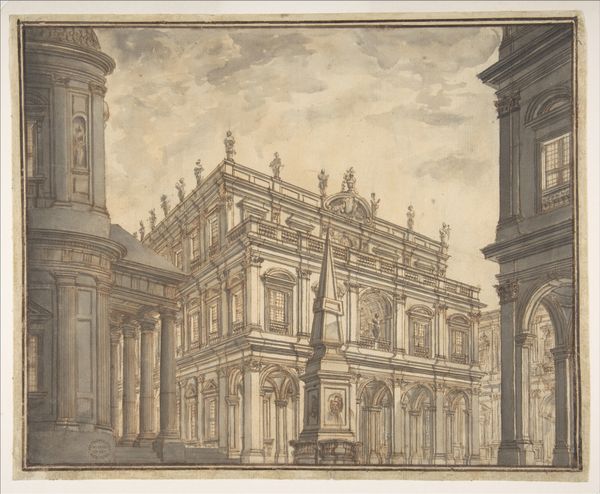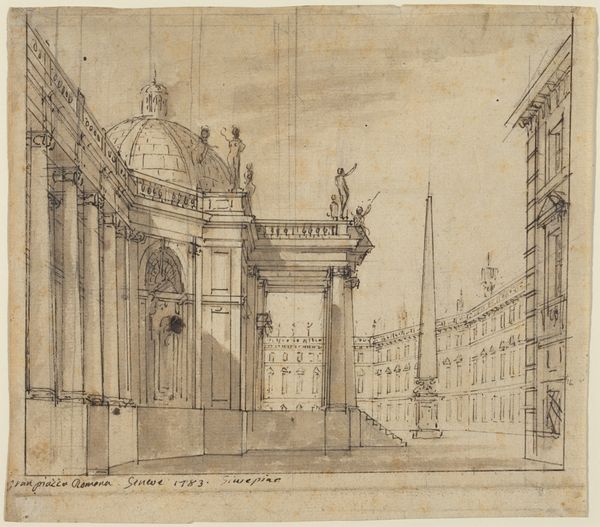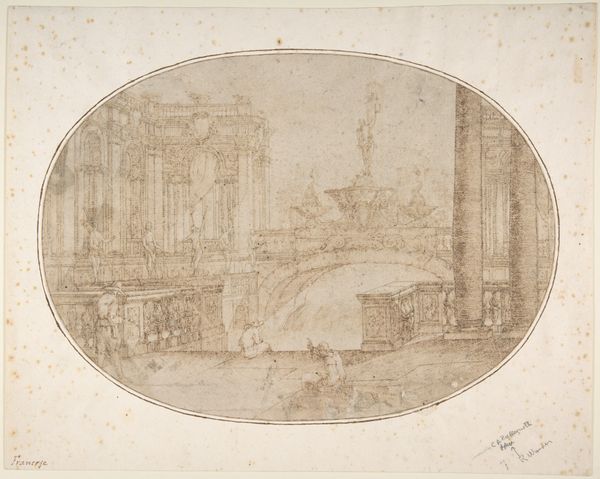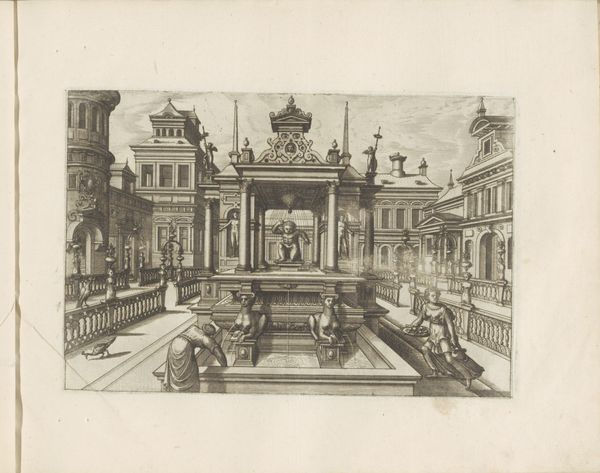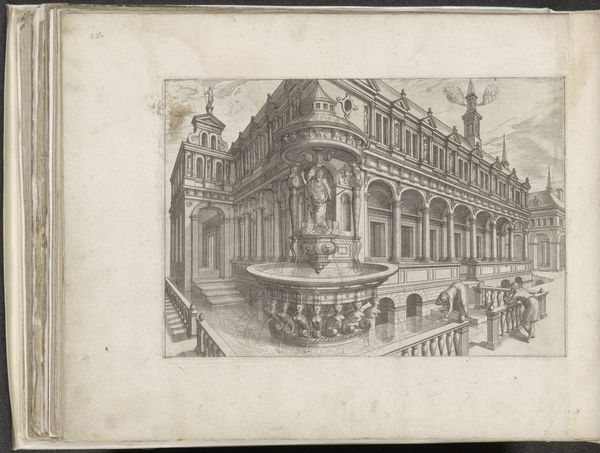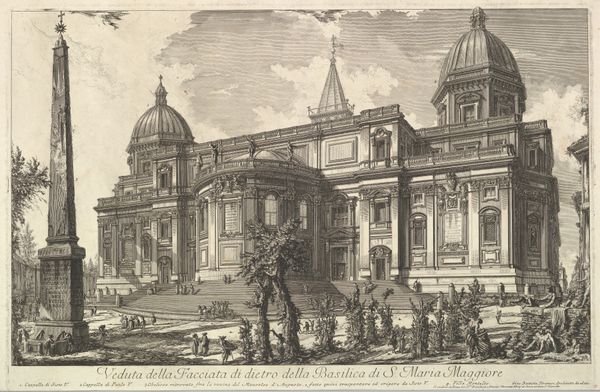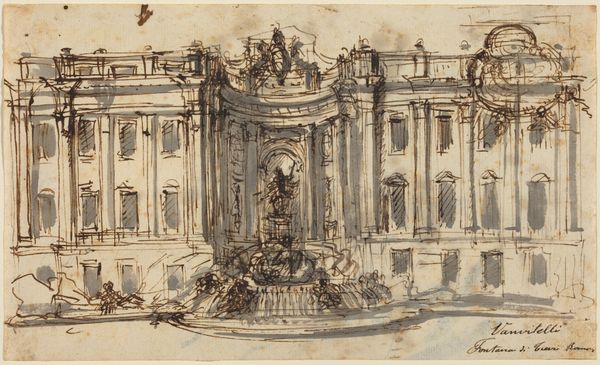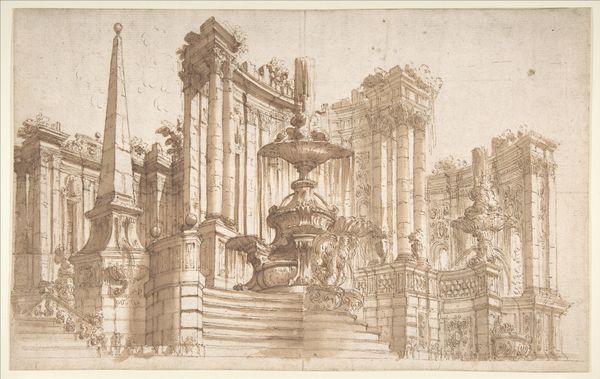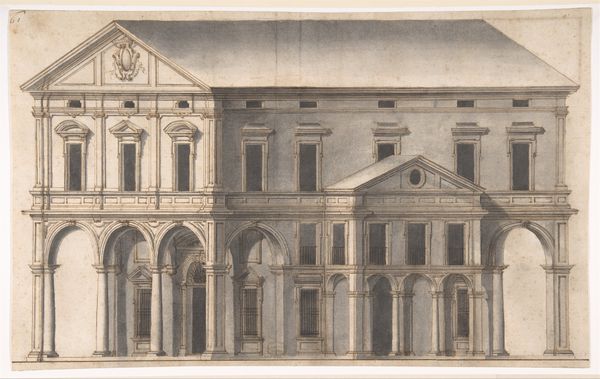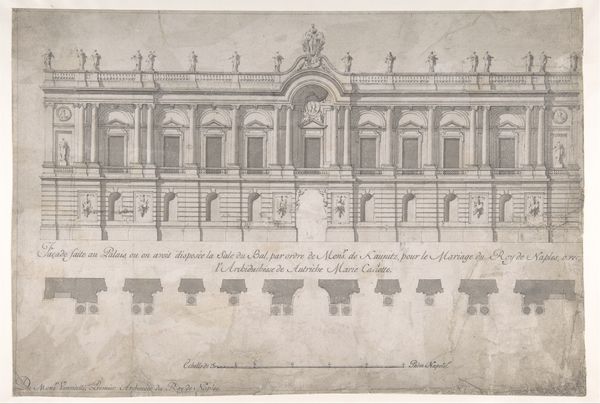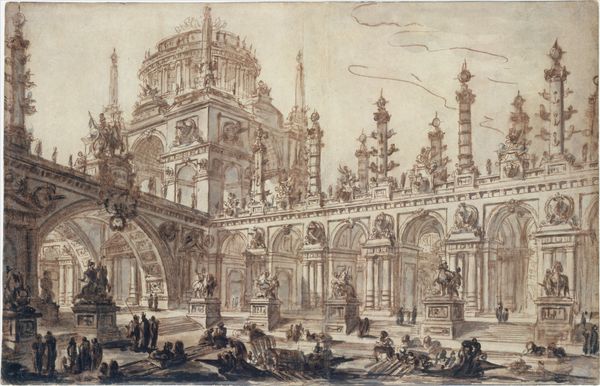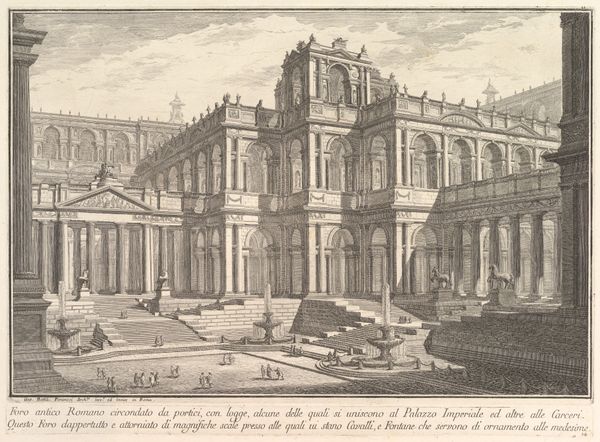
Dimensions: overall: 13.5 x 21.5 cm (5 5/16 x 8 7/16 in.)
Copyright: National Gallery of Art: CC0 1.0
Curator: Look at this incredibly detailed etching by Giovanni Battista Piranesi, titled "An Ancient Forum with Porticos," created between 1742 and 1743. Editor: It feels almost… foreboding. Despite the architectural grandeur, there's an unsettling emptiness and a hint of decay in those sepia tones. What story do you think this place holds? Curator: Well, Piranesi was deeply influenced by the grandeur and drama of ancient Rome. The etching, rendered in ink on paper, meticulously recreates a vision of the ancient world, showcasing monumental structures, colonnades, and perhaps hinting at the vastness of the Roman Empire's reach. Look at those sphinxes guarding the entrance. Editor: Sphinxes outside Rome, though? That strikes me as a statement about appropriation, doesn’t it? European societies' complex, sometimes problematic, relationship with ancient cultures, turning them into set pieces for their own power fantasies? It also suggests a fascination with exoticism, layering different cultural symbols within a singular imperial vision. Curator: Perhaps. Or, he might be layering meanings. Sphinxes are guardians, holding esoteric wisdom. By placing them within a Roman setting, he is layering symbolic traditions, creating a kind of palimpsest. It might suggest that the true power of Rome came from knowledge itself. It is worth observing that in the classical tradition the column itself held symbolic importance. Editor: Good point, but there’s a fragility to it. Those meticulously drawn lines also highlight how fleeting empires and the structures that define them really are. Etching lends itself to this transient quality; empires rise and inevitably fall. The print as a medium also speaks to circulation – how do images become powerful? And how did Piranesi’s image shape ideas about Roman power for his contemporaries? Curator: Exactly! The symbols live on. Piranesi uses his artistic skill to not simply document, but to reinvent and preserve this grandeur for generations. To make this legacy tangible through the symbolic language of architecture. Editor: It makes you wonder what future archaeologists might make of our own imposing architectural symbols one day. What stories will they construct, and what power structures will they see reflected? Curator: Yes, and through art we try to interpret those cultural memories while making some of our own. Editor: Indeed, something to consider for anyone walking through halls of power today.
Comments
No comments
Be the first to comment and join the conversation on the ultimate creative platform.
